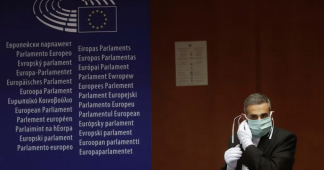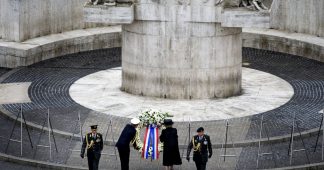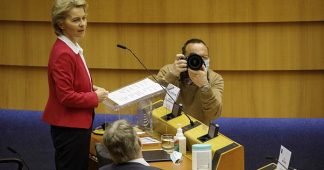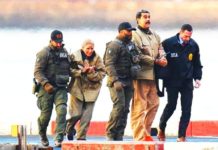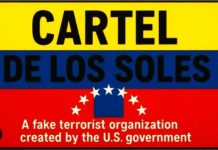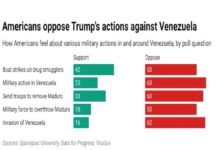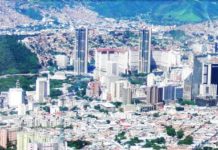By Dr. Manfred Gerstenfeld
August 31, 2020
BESA Center Perspectives Paper No. 1,721, August 31, 2020
EXECUTIVE SUMMARY: The decades-long absence of international media interest in the Netherlands has made it possible for the country’s authorities and elites to blur Dutch war crimes that took place during the 1948-49 repression of the Indonesian revolution. It is only now, when most of those who committed the crimes are dead or very old, that a major study on the Dutch post-war decolonization of Indonesia has started. This blurring of responsibility for the past is an integral part of Dutch culture.
The international image of the Netherlands is limited. Symbols associated with it usually include windmills, wooden shoes, tulips, and cheese. Asking people to name a Dutch person might yield the name of Anne Frank, though she never held Dutch nationality. Among the culturally inclined, Rembrandt and Van Gogh are likely to be mentioned.
In the absence of substantial international interest in the Netherlands, a local culture has developed that merits analysis.
Historically speaking, the greatest danger to the Netherlands has been the water of the North Sea. In 1953, a major breaking of dykes in the south of the country caused 1,836 deaths.
Important parts of Dutch culture can be explained by the fear of the sea. When the dykes break, everyone has to put in an effort. A famous Dutch story that is popular abroad (though completely invented) tells of Hans Brinker, a Dutch boy who put his finger in a hole in a dyke and thereby prevented a flood. Symbolically speaking, if the dykes break and a portion of the population does not do its share to fight the flood, everyone will drown. In such a culture, proverbs abound like “Make sure your head is not above mowing level” and “We all have to go through the same door.”
It is primarily in the economic sphere that “polder culture” arose in the Netherlands. A polder is an area that was once under water but has been dried and surrounded by dykes. In polder culture, one should not go to extremes but always look for a compromise. In a reflection of this culture, Dutch employers and trade unions often reach agreement without resorting to strikes.
Dutch culture is not one of polarization, which has its advantages. Before the murders of politician Pim Fortuyn in 2002 and journalist Theo van Gogh in 2004, one has to go back centuries to find any political murders in the Netherlands.
The Dutch government usually consists of several parties. In order to function, they negotiate, sometimes for months on end, about a joint program. Once an agreement is reached, the government members stick to it.
In this era of climate change concerns, the Dutch fear of the sea is alive and well. One extreme forecast says that if all the world’s glaciers were to melt, Dutch dykes would have to be raised to an impossibly high level, and the entire west of the country would be flooded. Major towns, including the capital Amsterdam, Rotterdam and its big harbor, and The Hague, which is the seat of the King and parliament, would disappear under the water. Seventeen million Dutch citizens would have to move to the mainly sandy lands in the eastern half of the country.
In such a closed society, criticism from abroad plays hardly any role. Visitors to the Netherlands are not confronted with any reminders of its many past war crimes, some of which are extreme. To all appearances, it is a land of friendly people, not a land with a dark history.
One book about the history of the Netherlands, The Land of Small Gestures, says: “Dutch culture is rarely dominated by the culture of the big gesture…whoever wants to study the past of the Netherlands has to develop an eye for the culture of the small gesture and has to have an ear for the quiet tone with which deep emotions are expressed.”
The Indonesian war of independence war broke out in 1948. The Dutch army, which contained an important indigenous component, committed many war crimes during that war. The Dutch called its acts of repression in Indonesia over the 1948-49 period “police actions.”
One of the first to draw attention to these war crimes was Johan Hueting, a psychologist and former soldier. He broke the taboo 20 years later—in 1969— during a television interview. After the broadcast, he received death threats from Dutch war veterans. He had to go into hiding along with his wife and children. He would later admit that he had participated in the war crimes of his unit.
Hueting declared on TV that Dutch militaries regularly, and without military necessity, shot up Indonesian villages. They also summarily killed farmers working on their land. He said that military intelligence personnel regularly tortured Indonesian prisoners, and that Dutch infantry units killed prisoners on the occasion of “attempts to flee.”
Hueting’s disclosures led the Dutch government to assign a young historian, Cees Fasseur, to investigate the criminal element of the Netherlands’ police actions in Indonesia. The report he produced, “The Excessennota,” was shallow and unilluminating.
Read more at https://besacenter.org/perspectives-papers/netherlands-war-crimes/
The Dutch historian Jan Willem Stutje, author of biographies of figures from the workers movement (Ernest Mandel, Hendrik De Man, the communist leader Paul De Groot …) has commented for DDP the article above by BESA as follows:
“There is nothing controversial in the article. If there are some comments to be made, they are as follows:
There has always been a ‘subcurrent’ of authors criticizing the official version of the colonial wars. But they were heavily opposed by the official historiographers as Jan Bank and the military elite. The fact that it is only now that real research is taking place has less to do with the so-called polder mentality than with the ordinary power relations and the paternalistic Christian ideology of the ruling political and cultural elite cowardly supported by social democracy, which bore a heavy responsibility for the military interventions.
A second observation that can be made is that the author limits himself to the period from 1945 to 1950. He “forgets” to mention that the Netherlands has a history of 300 years of looting and murder in the East Indies. The current investigation will not deal with this, nor with the Dutch involvement in slavery in the West and East. A brief comment about this would not have marred the document, certainly in this day and age of Black Lives Matter.”
